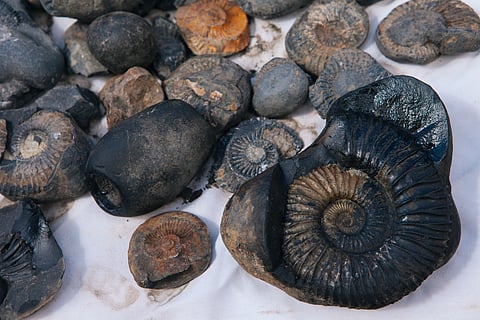

Some 252 million years ago, the planet experienced the Great Dying — the largest extinction event in Earth’s history. It wiped out around 80-90 per cent of marine species and approximately 70 per cent of land-based vertebrate families. In the years that followed, fossil records showed that many of the surviving organisms looked strikingly similar, regardless of where they lived, a phenomenon that has long puzzled scientists.
A new study published in the journal Science Advances has offered clues to explain this global “sameness”. Researchers referred to it as taxonomic homogenisation — a process in which species composition across different ecological communities begins to resemble one another more closely over time.
The scientists attribute this post-extinction convergence to environmental changes, rather than ecological factors such as predator-prey relationships. Such homogenisation is a form of biodiversity loss.
Jood Al Aswad, a PhD candidate in Earth and planetary science and one of the authors of the research, explained this phenomenon using kangaroos as an example. “If someone asked you today where you’d find kangaroos, you’d say Australia. But now imagine some major disaster happened, like a giant volcano erupted, and afterwards you’re finding kangaroos in great numbers all over the globe — they are all the way out in Antarctica, hopping by the pyramids in Egypt, even in Stanford, California.”
Scientists worldwide have seen that fossil remains before and after the extinction go from richly diverse communities to almost alike communities, otherwise called the “dulling event”.
The team proposed two possible drivers of this homogenisation. The first was ecological release — when the extinction of predators allows a surviving species to expand unchecked. The second was a shift in environmental conditions that allowed certain species to expand into newly hospitable habitats.
To test these hypotheses, the researchers focused on marine life. They developed a model based on geochemical data reconstructing oceanic oxygen levels and temperatures during and after the extinction.
Next, Aswad and colleagues included another data point in the model: Data from physiological experiments on living modern marine invertebrates such as clams and snails — related to species that either survived or perished in the Great Dying.
By analysing how these organisms tolerated changes in oxygen and temperature, the researchers simulated how ancient species might have dispersed in response to these environmental shifts. The model generated a “physiology-only” assessment of how species' geographical distributions would change if oxygen and temperature were the primary drivers of where species could travel.
The results indicated that molluscs and other hardy invertebrates appeared more frequently in fossil records not simply because of random survival, but because their physiology made them better suited to the changed environmental conditions.
“Our study has provided a simple environmental explanation, rather than an ecological one, for why certain survivors of the extinction prospered and why homogenisation happened on a global scale,” Jonathan Payne, Dorrell William Kirby Professor of Earth and Planetary Sciences in the Stanford Doerr School of Sustainability and one of the authors of the study, said in a statement.
The team now hopes to apply their model to investigate the link between environmental changes and other past mass extinctions, such as the end-Cretaceous event that famously wiped out all dinosaurs (except birds) some 65 million years ago.
“Our model offers a great way of studying how animals respond to extreme changes in the environment,” Al Aswad explained.
The study also could provide insights into the current biodiversity crisis. “With anthropogenically spurred climate change, there has been some warning that if we continue, then in the future we’re going to see taxonomic homogenisation of organisms in modern oceans as well,” the expert added.